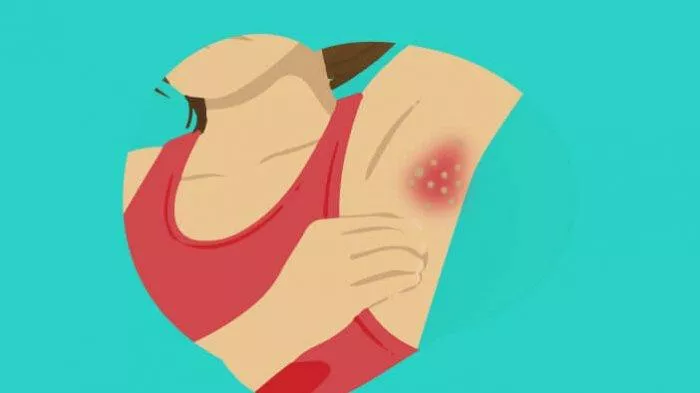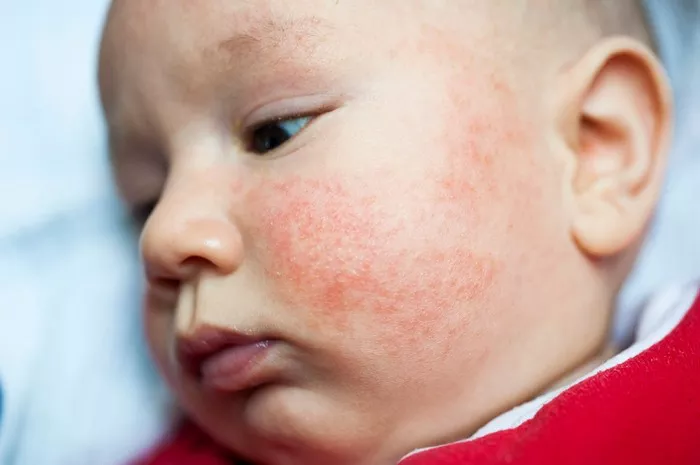Hidradenitis Suppurativa (HS) is a chronic inflammatory skin condition characterized by painful nodules, abscesses, and tunnels (sinus tracts) that typically occur in areas where skin rubs together, such as the armpits, groin, buttocks, and under the breasts. One common concern among individuals affected by HS is how the condition spreads. This article explores the mechanisms of HS spread, risk factors, and preventive measures to manage and minimize transmission.
Understanding Hidradenitis Suppurativa
Hidradenitis Suppurativa affects approximately 1-4% of the population and often begins after puberty. It is more prevalent in women and those with a family history of the condition. The exact cause of HS is not fully understood, but it is believed to involve inflammation of the hair follicles and sweat glands, leading to obstruction, rupture, and subsequent infection.
Mechanisms of Spread
The spread of Hidradenitis Suppurativa can occur through several mechanisms:
1. Direct Skin-to-Skin Contact: The primary mode of transmission is through direct contact with affected skin. Skin-to-skin contact with open wounds, draining abscesses, or sinus tracts can transfer bacteria responsible for HS (often Staphylococcus aureus) to unaffected areas of the skin.
2. Autoinoculation: Autoinoculation refers to the spread of bacteria from one part of the body to another. Individuals with HS may inadvertently transfer bacteria from affected areas to other parts of their body through scratching, touching, or inadequate hygiene practices.
3. Contaminated Objects: Sharing personal items such as towels, razors, or clothing with someone who has HS can potentially transfer bacteria and contribute to the spread of the condition. However, this mode of transmission is less common compared to direct skin-to-skin contact.
Factors Influencing Spread
Several factors can influence the likelihood of HS spreading from one area to another or from one person to another:
1. Severity of Lesions: Individuals with more severe HS, characterized by extensive abscesses, draining sinus tracts, or multiple affected areas, may have a higher risk of spreading the condition to other parts of their body.
2. Poor Hygiene Practices: Inadequate hygiene, such as infrequent washing or sharing contaminated personal items, can increase the risk of spreading bacteria responsible for HS.
3. Immune System Status: A weakened immune system due to underlying conditions or medications can make individuals more susceptible to HS infection and potentially facilitate its spread.
4. Genetic Predisposition: Genetic factors may play a role in the susceptibility to developing HS and influencing its spread within families or among genetically related individuals.
Preventive Measures
Preventing the spread of Hidradenitis Suppurativa involves a combination of hygiene practices, lifestyle modifications, and treatment strategies:
1. Good Hygiene: Practicing regular gentle cleansing of affected areas with mild soap and water can help reduce bacterial colonization and prevent infection.
2. Avoiding Skin-to-Skin Contact: Minimizing direct contact with affected skin, especially during flare-ups or when lesions are draining, can reduce the risk of spreading HS to other parts of the body or to others.
3. Personal Care Items: Avoid sharing personal items such as towels, razors, and clothing with others to prevent potential transmission of bacteria.
4. Medical Treatment: Following prescribed treatment regimens, including topical or oral antibiotics, anti-inflammatory medications, or biologic therapies, can help manage symptoms and reduce the likelihood of spreading HS.
5. Healthy Lifestyle: Maintaining a healthy weight, quitting smoking (if applicable), and managing underlying health conditions can support overall immune function and reduce the severity of HS.
Clinical Considerations
Healthcare providers play a crucial role in educating individuals with HS about transmission risks and preventive measures. Key clinical considerations include:
1. Patient Education: Providing comprehensive information about HS, including its causes, symptoms, treatment options, and preventive strategies, empowers individuals to manage their condition effectively.
2. Regular Monitoring: Healthcare providers should monitor disease progression, treatment response, and potential complications associated with HS to optimize patient care.
3. Psychosocial Support: Addressing the psychosocial impact of HS, such as pain, discomfort, body image concerns, and social isolation, is essential for holistic patient care.
SEE ALSO: What Treatments Are Available for Hidradenitis Suppurativa
Public Health Perspective
From a public health standpoint, raising awareness about Hidradenitis Suppurativa and its transmission risks can help reduce stigma, improve early detection, and promote adherence to preventive measures. Public health initiatives may include:
1. Educational Campaigns: Launching educational programs targeting healthcare providers, affected individuals, and the general public to increase understanding of HS and promote preventive behaviors.
2. Research and Surveillance: Supporting research efforts to better understand the epidemiology, risk factors, and transmission dynamics of HS can inform evidence-based interventions and public health strategies.
3. Policy Development: Developing policies and guidelines for infection control practices in healthcare settings and community settings to minimize the spread of HS.
Conclusion
Hidradenitis Suppurativa is a chronic inflammatory skin condition that can have a significant impact on quality of life. Understanding how HS spreads through direct skin-to-skin contact, autoinoculation, and occasionally through contaminated objects is essential for implementing effective preventive measures. By practicing good hygiene, avoiding skin-to-skin contact with affected areas, and following prescribed treatment regimens, individuals can reduce the risk of spreading HS and manage their condition more effectively. Healthcare providers play a critical role in educating patients about transmission risks, providing appropriate treatment, and supporting holistic care approaches to improve outcomes for individuals affected by HS.
Related Topics:

























